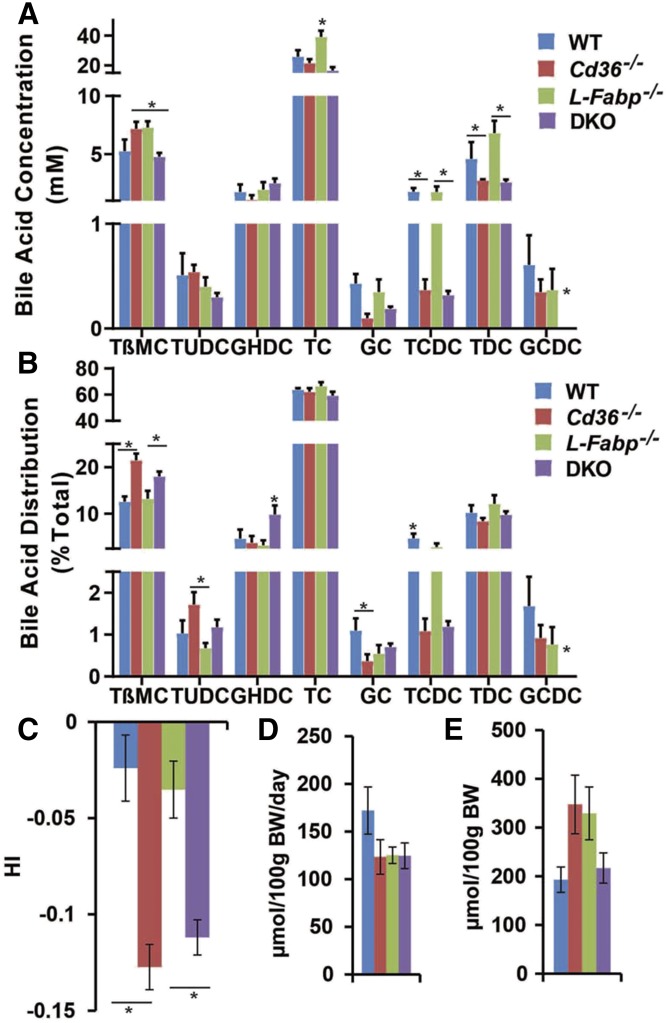Fig. 2.
Bile acid species, hydrophobicity, fecal bile acid excretion, and pool size in LD-fed mice. A, B: Biliary bile was collected from mice fed a LD for 2 weeks, and bile acid species were determined by HPLC as described in Materials and Methods. A: Biliary bile acid concentrations revealed an increase in taurocholate (TC) in L-Fabp−/− mice with a decrease in taurochenodeoxycholate (TCDC) and taurodeoxycholate (TDC) concentration in Cd36−/− and DKO mice compared with WT mice. B: Bile acid species distribution was altered in Cd36−/− and DKO mice, with increased abundance of relatively hydrophilic bile acids tauro-β-muricholate (TβMC), tauroursodeoxycholate (TUDC), and glycohyodeoxycholate (GHDC) (DKO), and decreased abundance of hydrophobic bile acids glycocholate (GC), TCDC, and glycochenodeoxycholate (GCDC). C: Hydrophobicity index (HI) of biliary bile from representative animals of the four genotypes was calculated by using published algorithms (Materials and Methods), revealing a significant reduction in Cd36−/− and DKO mice compared with either WT or L-Fabp−/− mice. D: Fecal bile acid excretion (μmol per 100 g of bw per day) was comparable across the four genotypes. Mice were individually housed, and feces were collected for up to 72 h. Fecal bile acids were extracted and quantitated enzymatically. E: Bile acid pool size (μmol per 100 g of bw) was comparable in four genotypes. Liver, gallbladder, and the entire small and large intestine were pooled and subjected to ethanolic bile acid extraction. Total bile acid mass was measured enzymatically. The data are the mean ± SE (n = 4–8 per group). *Statistically significant differences (P < 0.05).

